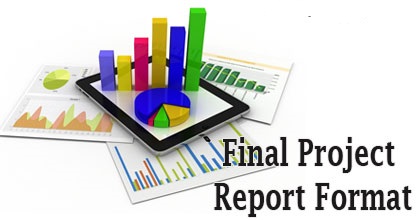User Intent
When completing a project, professionals and students alike often need to prepare a project final report. This document serves as a comprehensive summary of the project’s objectives, processes, outcomes, and lessons learned. But what exactly should be included in a project final report? This guide provides a step-by-step breakdown, ensuring clarity and effectiveness.
Introduction
A project final report is a critical document that provides a complete overview of a project from initiation to closure. It includes essential details such as goals, methodologies, outcomes, and future recommendations. Whether in business, academics, or research, this report helps stakeholders understand the effectiveness of the project and its long-term impact.
Creating a well-structured project report enhances transparency, aids future decision-making, and ensures accountability. In this guide, we will explore the essential components of a project final report and how to structure it effectively.
Definition
A project final report is a formal document summarizing the entire project lifecycle. It covers aspects such as:
- Project objectives
- Methodologies used
- Achievements and challenges
- Lessons learned
- Recommendations for future projects
This document is crucial for evaluating project success and providing insights for future improvements.
Application
A project final report is widely used across different sectors. Here’s how it applies in various fields:
- Business Projects: Organizations use project reports to analyze financial performance, assess team productivity, and improve project management strategies.
- Academic Research: Students and researchers submit project reports to demonstrate their work’s findings, methodologies, and conclusions.
- Engineering and IT Projects: Reports document technical implementations, system performance, and areas needing improvement.
- Government Projects: Used for transparency, accountability, and future policy planning.
- Non-Profit and NGO Projects: Reports help in tracking impact, securing funding, and demonstrating results to stakeholders.
Benefits
A well-prepared project final report offers numerous advantages:
1. Provides Clear Documentation
- Summarizes all project details in one place
- Serves as a reference for future projects
2. Enhances Decision-Making
- Helps stakeholders analyze project success
- Guides future resource allocation
3. Improves Accountability
- Ensures that project goals and objectives are met
- Highlights responsibilities of each team member
4. Aids Knowledge Sharing
- Facilitates learning from past mistakes
- Encourages best practices for future projects
5. Supports Funding and Grants
- Demonstrates project success to investors or donors
- Strengthens credibility for future funding applications
Limitations
While project final reports offer numerous benefits, they also have some limitations:
1. Time-Consuming to Prepare
- Requires thorough data collection and analysis
- Takes considerable effort to compile all information
2. Risk of Bias
- Reports may reflect personal opinions rather than factual results
- Stakeholders may exaggerate or downplay certain aspects
3. Limited Real-Time Insights
- Provides historical data rather than real-time updates
- Might not reflect the most recent project developments
4. Complexity in Large Projects
- Difficult to compile in multi-phase or long-term projects
- Requires extensive collaboration among different teams
Comparative Table
Here’s a quick comparison of the benefits and limitations of a project final report:
| Aspect | Benefits | Limitations |
|---|---|---|
| Documentation | Provides complete project details | Can be time-consuming |
| Decision-Making | Helps analyze project success | May include biased information |
| Accountability | Ensures project goals are met | Limited real-time insights |
| Knowledge Sharing | Facilitates learning and best practices | Complex for large projects |
| Funding Support | Strengthens credibility for grants and investment | Might not reflect evolving project details |
Conclusion
A project final report is an essential document that provides a comprehensive overview of a project’s success, challenges, and future recommendations. While it offers numerous benefits, such as enhanced decision-making and accountability, it also has limitations, including time consumption and potential bias. By structuring the report properly and maintaining accuracy, organizations and individuals can maximize its effectiveness.
FAQs
1. What is the main purpose of a project final report?
The main purpose is to document project progress, analyze results, and provide recommendations for future improvements.
2. Who should prepare the project final report?
Project managers, team leaders, or researchers typically prepare the report, depending on the project’s nature.
3. What are the key sections of a project final report?
The key sections include an introduction, objectives, methodology, results, challenges, lessons learned, and recommendations.
4. How long should a project final report be?
The length varies based on project complexity, but it typically ranges between 10-50 pages for business and research projects.
5. How can I make my project report more engaging?
Use clear headings, bullet points, data visualization (charts/graphs), and concise language to enhance readability.

For further details access our website https://vibrantfinserv.com

